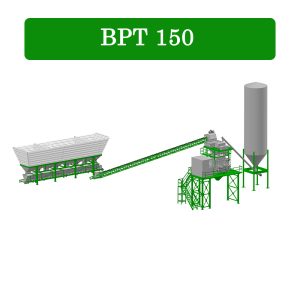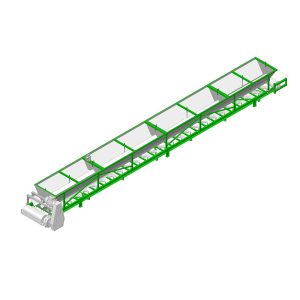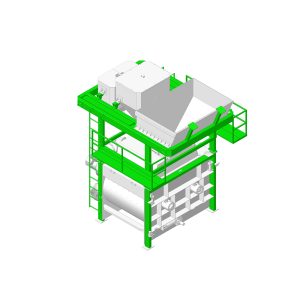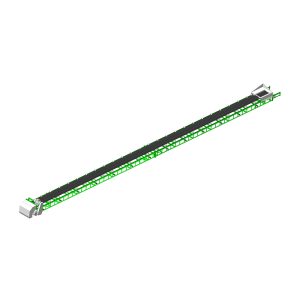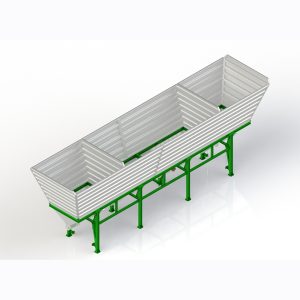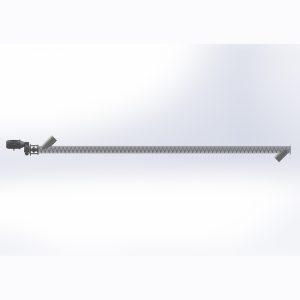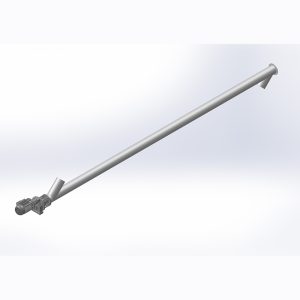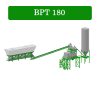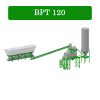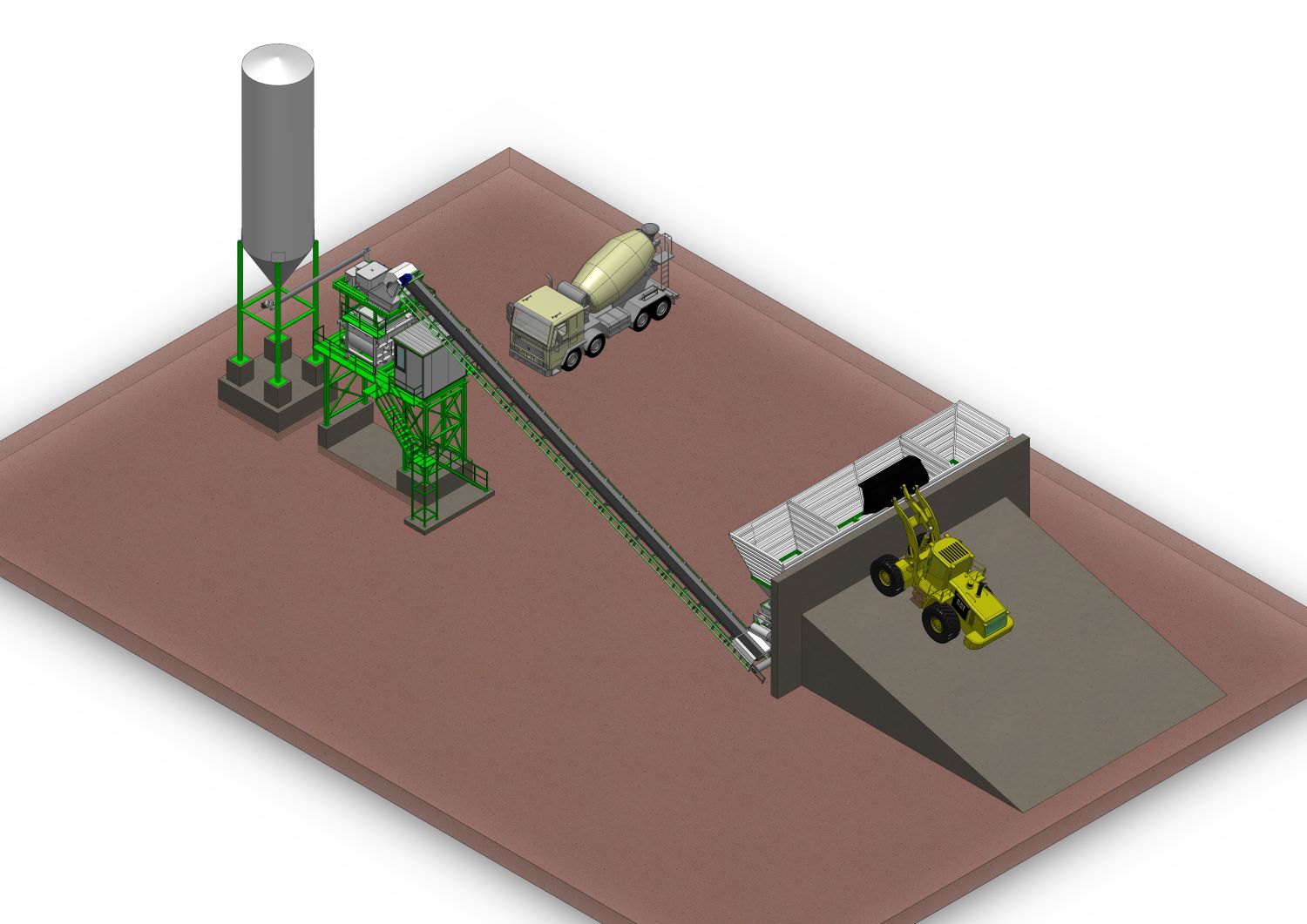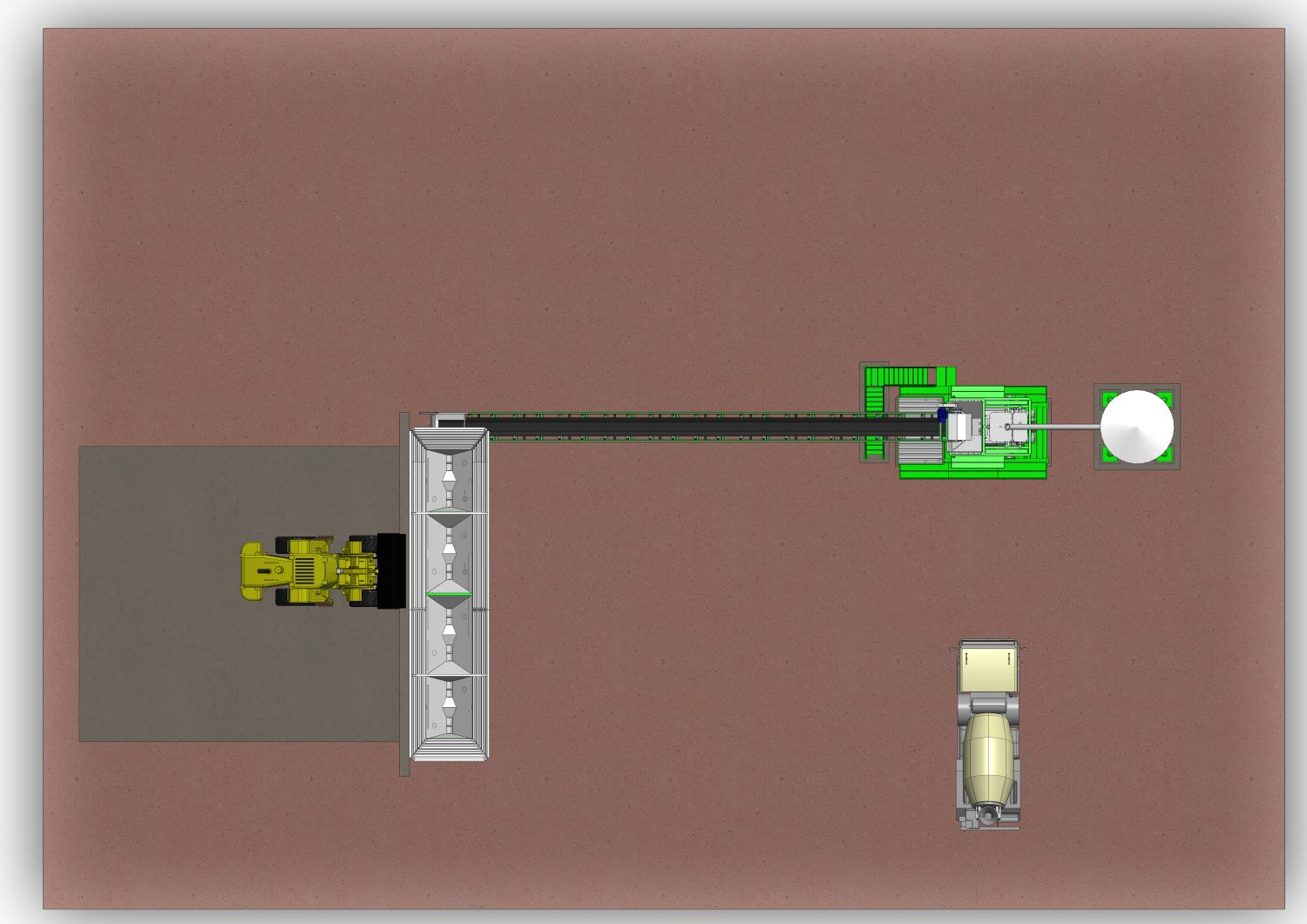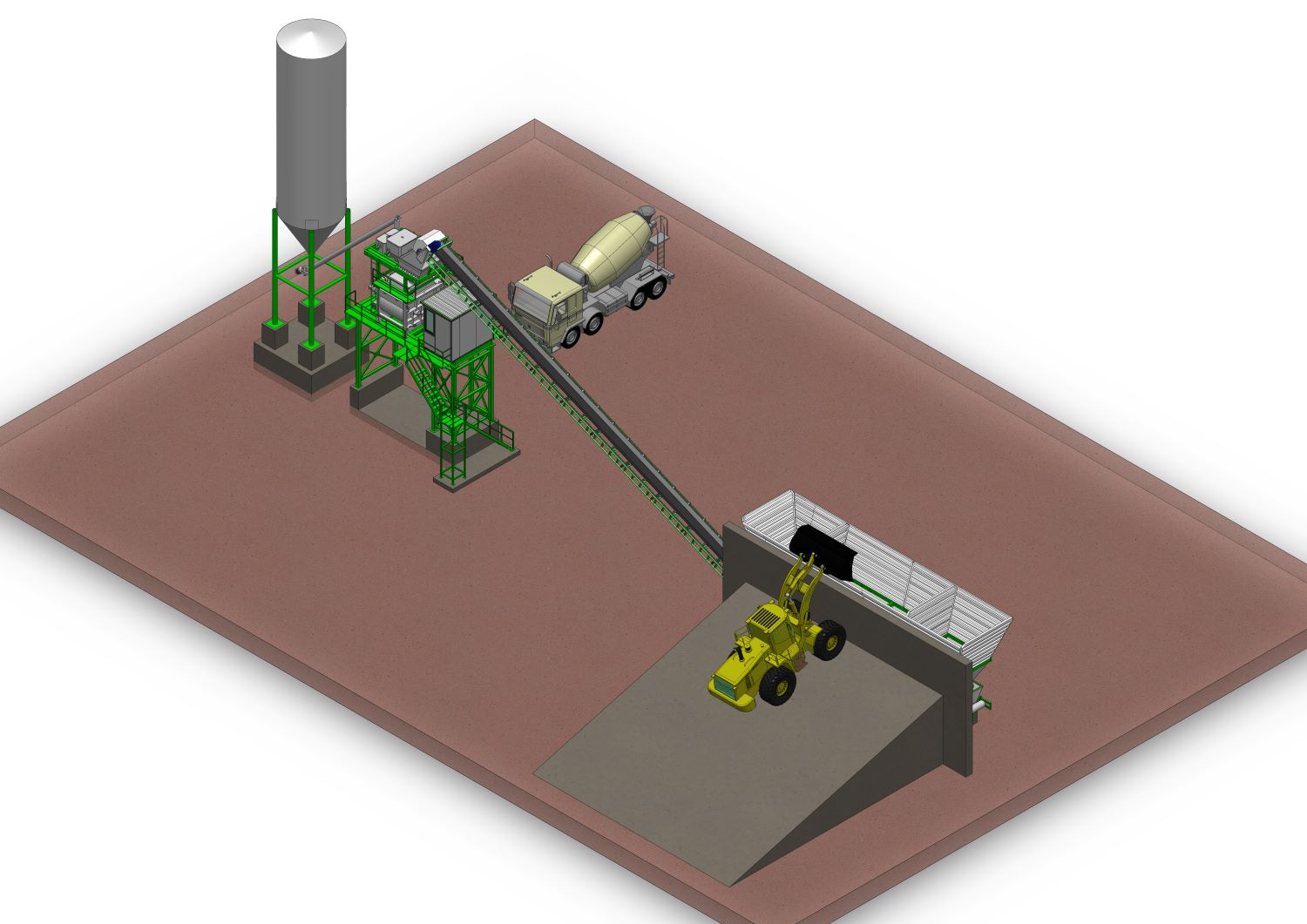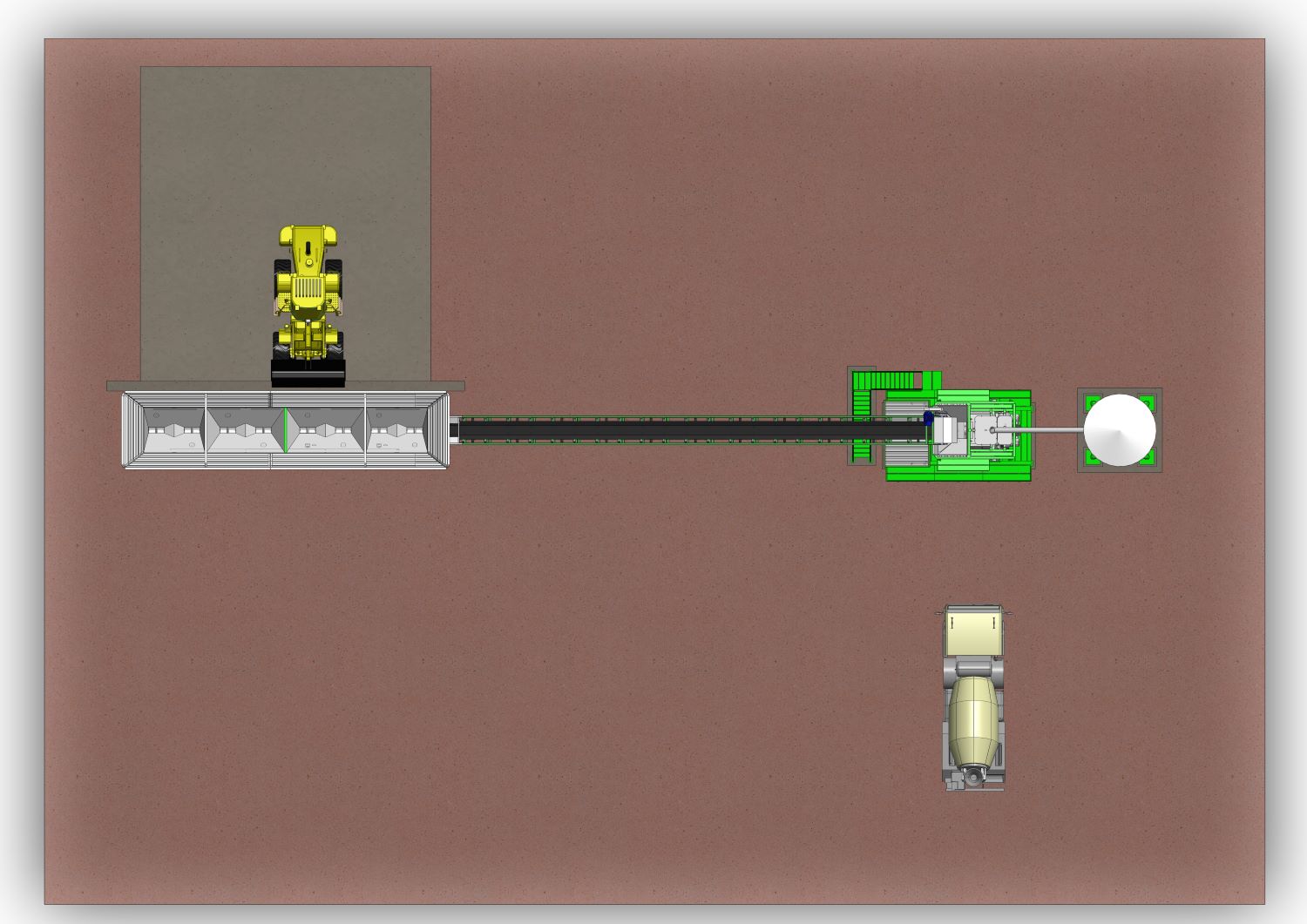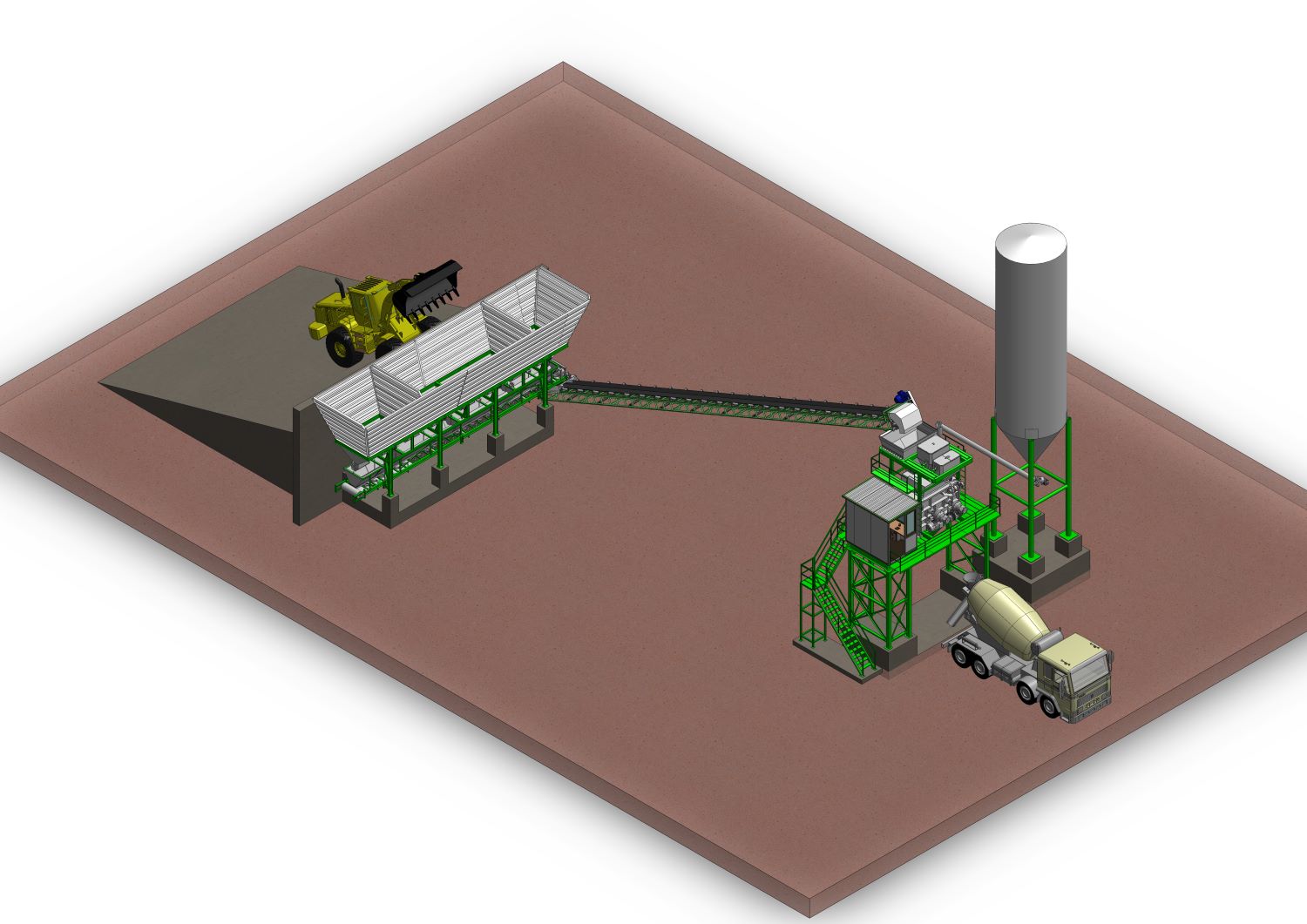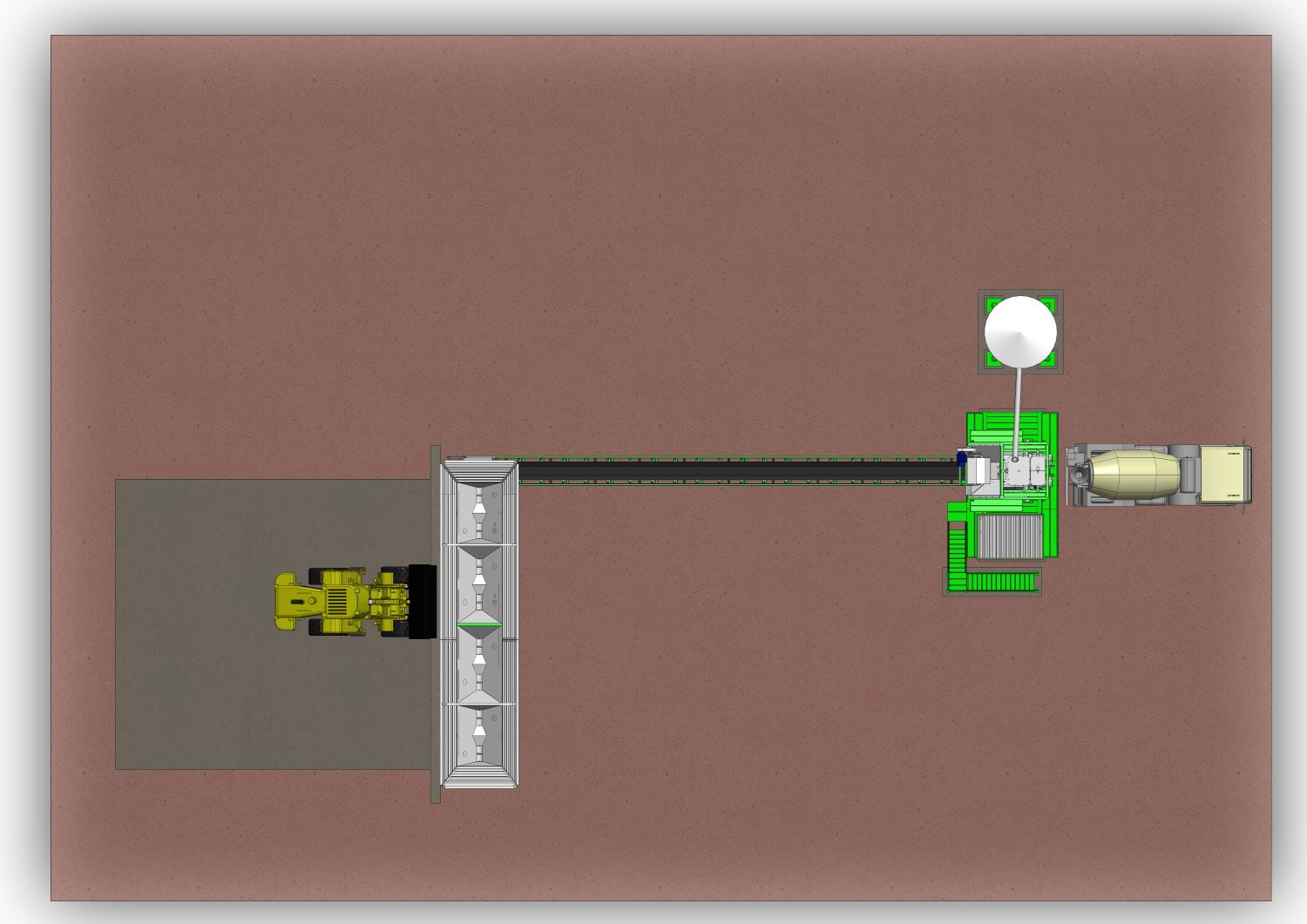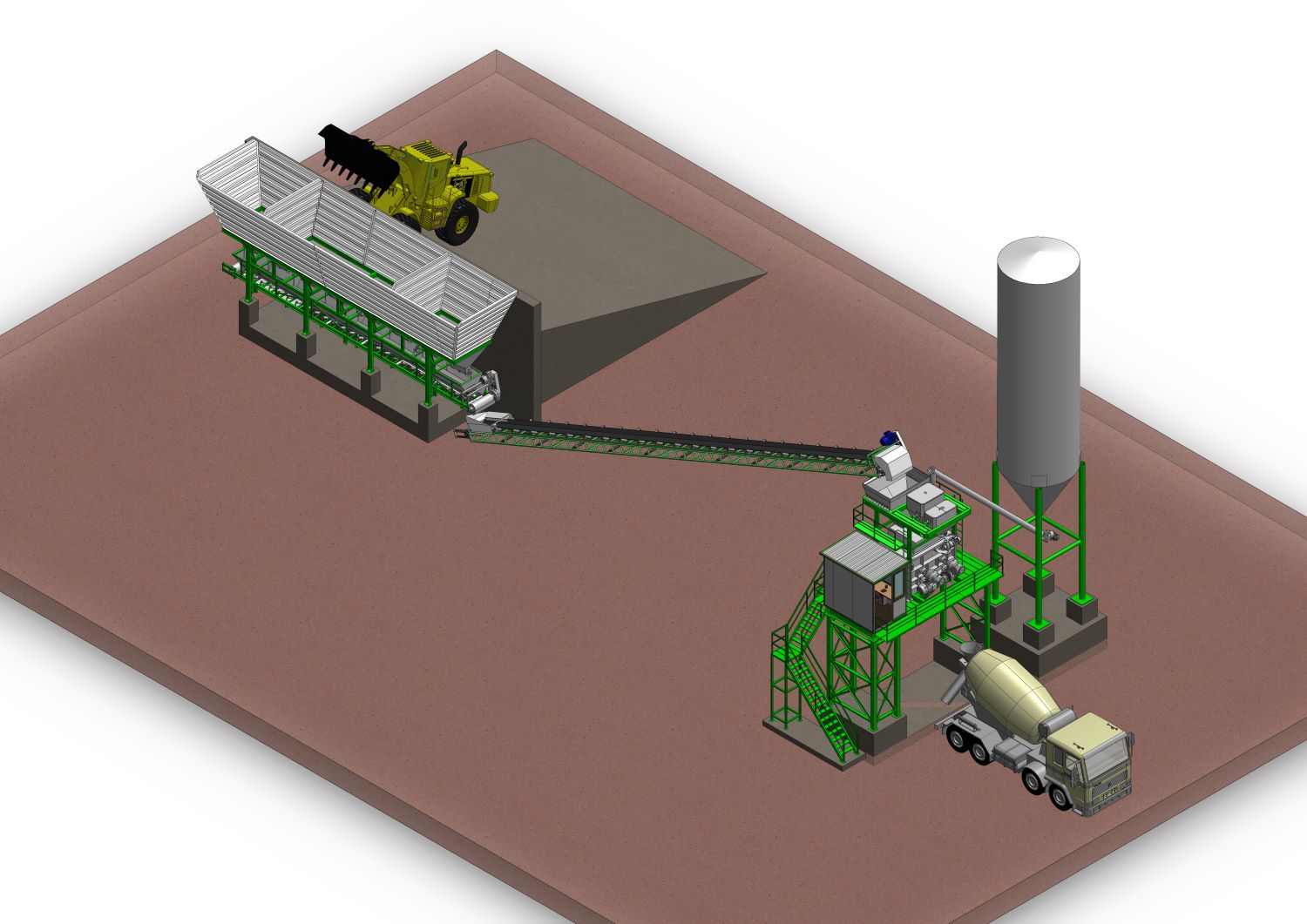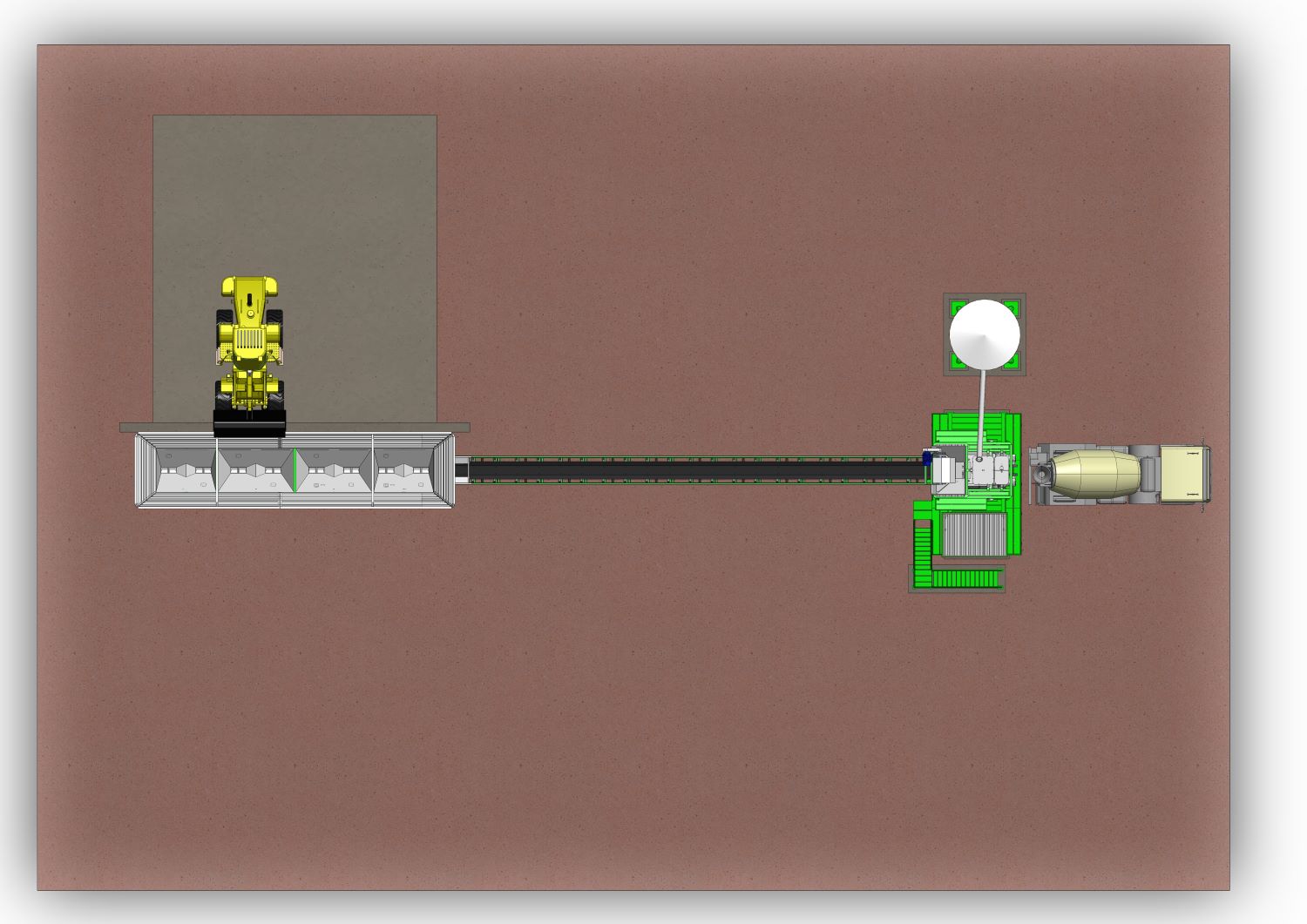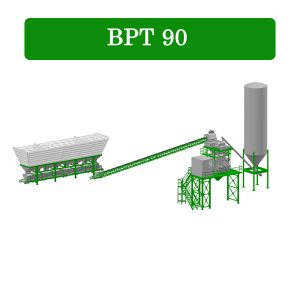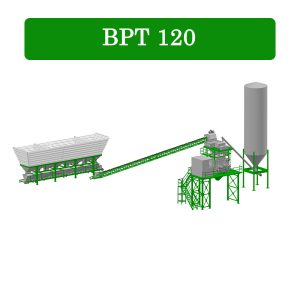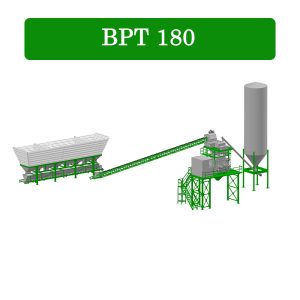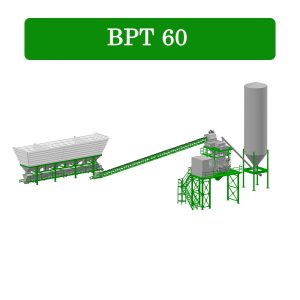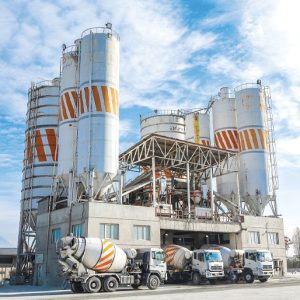| بچینگ پلانت تویین شفت 2.5 متر مکعبی | |
| مدل | BPT150 |
| ظرفیت خروجی میکسر (درهرنوبت) | 2/5 m3 |
| قدرت میکسر | 2*50hp |
| سیلو ی ذخیره مصالح | 4*25m3 |
| عرض نوار توزین مصالح | 800mm |
| طول نوار توزین مصالح | 12m |
| عرض نوار انتقال مصالح | 1000mm |
| طول نوار انتقال مصالح | ~ 26m |
| توزین مصالح و سیمان | 6200/1300kg |
| قطر اسکروی سیمان | 12inch |
| طول اسکروی سیمان | 7m |
| ارتفاع تخلیه بتن | 4/1m |
| کمپرسور هوا | 650lit/ min |
| باکت انتظار مصالح | 2900 lit |


در پروژه هایی که بتن مستقیما از بچینگ پلانت توسط پمپ بتن منتقل می شود، به دلیل اینکه بتن ریزی به صورت پیوسته صورت نمی گیرد و گاهاً بتن ریزی باید متوقف گردد، بدین منظور از میکسر ثانویه برای نگهداری بتن استفاده میگردد. ابعاد آن حداقل دو برابر ظرفیت میکسر اصلی در پروژه در نظر گرفته می شود.
باکت انتظار با ایجاد هم پوشانی در زمان انتقال و میکس، سیکل کاری بچینگ در هر بچ را تا 25% کاهش می دهد.
علاوه برآن، این سیستم قابلیت بارگیری و میکس یک بچ از روی نوار توزین را در زمان تعویض میکسرها دارد ، که در این طرح به محض استقرار میکسر در محل بارگیری، درب تخلیه میکسر باز شده و عملیات تخلیه بتن صورت می گیرد و به این ترتیب سیکل کاری بچینگ دارای راندمان بیش از 25% نسبت به سیکل دستگاه ساده می باشد.
پوششی فلزی بر روی نوار انتقال که نه تنها باعث زیبایی ظاهری دستگاه می گردد بلکه از گرم شدن لاستیک نوار و در نتیجه بالا رفتن حرارت سنگدانه ها جلوگیری میکند. این امر موجب ماندگاری بالاتر قطعات نوار انتقال و در زمان بارندگی عدم جاری شدن آب بر روی نوار و بهم ریختن طرح اختلاط اعلامی به دستگاه خواهد شد.
* در زمان ایجاد کاور نوار انتقال، جهت تردد و تعمیرات احتمالی کل مسیر به وسیله walk way با کف گریتینگ پوشش داده می شود.
با توجه به تولید انواع بتن های خاص و ضرورت استفاده از مواد های افزودنی در اختلاط های بتن، بچینگ پلانت های توئین شافت ساخت استاندارد ماشین قابلیت اضافه کردن انواع افزودنی ها به صورت ژل، مایع، دوغاب و پودر را دارا می باشند.
مواد افزودنی مایع به صورت پمپاژ به مخزن تعبیه شده در بالای میکسر انتقال یافته و پس از توزین با لودسل ها و مطابق با طرح اختلاط به میکسر اضافه می گردد.
مواد افزودنی پودری به وسیله اسکرو و باکت توزین به میکسر اضافه می گردد.
در خصوص مواد افزودنی ژل و دوغاب با توجه به ساخت میکسرهای کلوئیدی در این کارخانه، قابلیت ساخت و توزین و انتقال انواع دوغاب و ژل به بتن تولیدی امکان پذیر می باشد.









